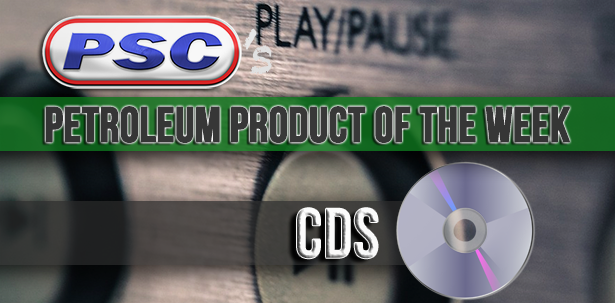Petroleum Product of the Week: CDs
By on Jun 09 2017

To this day, there are still certain bands that I will buy CDs for. Many people have switched to a 100% digital life, but nothing beats a tangible CD or
vinyl. I own physical copies of my favorite albums.
I keep my favorite CDs in my car and, though my car is Bluetooth compatible, I do often listen to full-length albums. That experience just can't be replicated through a phone. Choosing a CD, putting it in the CD player, and listening from track one through to the end. There's nothing else like it.
So, no matter what you might think about whether or not the CD is dead, it's still around today. And just like hard copies of books I don't think they're going away anytime soon.
History of the Compact Disk
Inventor James T. Russell has been credited with inventing the first digital recording on a piece of transparent foil which was lit from behind by a halogen lamp. He was granted a patent in 1970 and Philips and Sony licensed his patent in the '80s. The compact disk we know today was co-developed by both Philips and Sony and released in 1982.
CDs were designed with the original intention of storing sound recordings but was soon adapted to store data (CD-ROM). Today, the compact disk is not only used to hold sound recordings and data but also video, and more.
A CD is read by a laser which can focus on a very narrow area as small as 1/2500 th of an inch. Sound data can take up a lot of space, so inventors were challenged with finding something that would work and hold enough data early on.
Integrated circuit technology allows the processing of millions of computations in just microseconds, which allows for the quick reading of tightly-stored digital audio files.
Philips and Sony set standards for optical storage disks in the late 1970s which all hardware manufacturers adopted in 1981 as the production of CDs began and were introduced to the masses.
From Petroleum to Production
The first material used to make a CD is a base layer of polycarbonate plastic. That is then covered with a thin layer of aluminum and a final clear layer of acrylic for protection. That polycarbonate plastic is made from the petrochemicals bisphenol A and phosgene.
The production of compact disks involves many machines that assemble, cut, press, and mold the raw materials into the final form that we use in our cars and CD players. So, aside from the petroleum in the disks, lubricants are used to ensure that the machines run properly and flawlessly.

Without these machines, the process of making CDs would take much longer and there would likely be more waste produced. Machines are made to streamline and perfect the process to eliminate as much human error as possible.
What starts with the human brain here ends with a machine, and we enjoy listening to that final product in a small machine of our own.
Sources:
http://www.madehow.com/Volume-1/Compact-Disc.html http://www.newcyberian.com/cd-manufacturing.html https://en.wikipedia.org/wiki/Petrochemical






